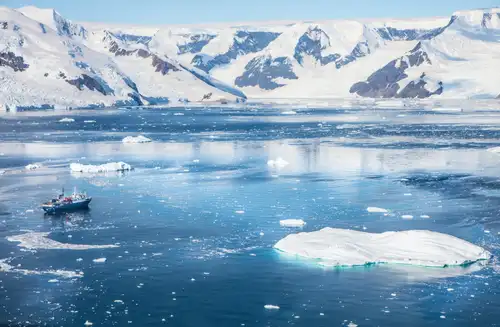Name: Emperor Penguin (Aptenodytes forsteri)
Length: 100-122 cm (3.2-4 feet)
Weight: 25-45 kg (55-100 pounds)
Location: Antarctica
Conservation status: Unknown (IUCN)
Diet: Mainly fish, also crustaceans and cephalopods
Appearance: Black heads and backs, white bellies with yellow trim around the neck

How do emperor penguins hunt?
Emperor penguins hunt for fish and other marine life in the open seas or ice cracks. They can dive to depths of nearly 550 meters (1800 feet) and stay underwater for almost 20 minutes. To handle the cold, they reduce their metabolism and blood flow to non-essential organs and have evolved solid bones to withstand water pressure during deep dives.
Do emperor penguins socialize?
Emperor penguins work together while foraging and form large colonies on land, sometimes numbering in the thousands. These colonies are called "rookeries," "waddles," or "penguineries." To stay warm in harsh winds, they huddle in circles, with the youngest in the center and adults rotating in and out of the outer layer.

How fast can emperor penguins move?
On land, they waddle at about 2.5 kph (1.55 mph) and can slide faster on their bellies. In water, they usually swim at 10 kph (6 mph) but can reach 15 kph (9.5 mph) when needed.
What is the emperor penguin mating season like?
Emperor penguins are the only penguin species that breeds during the Antarctic winter. They become sexually mature at three years old. From January to March, they feed to fatten up for the breeding season. In April, they march up to 150 km (95 miles) to their breeding grounds. Mating occurs in May, with males arriving first to prepare. Males court females with calls and displays, and once paired, they stay together for the season.
Females lay a single egg, which the males incubate on their feet under a brood patch for two months while fasting. Females return to the sea to feed, often not returning before the chick hatches. Males feed the chicks with a substance from their esophagus until the females return. Chicks form groups called "crèches" for warmth. By November, chicks grow protective feathers, and in December, the breeding cycle starts again.
How long do emperor penguins live?
They live about 15-20 years in the wild.
How many emperor penguins are there today?
In 2009, a survey found 46 colonies with 238,000 breeding pairs, suggesting a total of 595,000 individual penguins. Since then, seven more colonies have been discovered.
Do emperor penguins have any predators?
Chicks are preyed upon by southern giant petrels and south polar skuas, while adults are hunted by orcas and leopard seals.

Seven essential emperor penguin facts
- They are the largest penguins in the world.
- They can dive deeper than any other bird, including other penguins.
- Emperor penguins use their feet and brood patches as nests.
- They porpoise while swimming, reducing friction with micro air bubbles and possibly for fun.
- Their tuxedo look provides camouflage while swimming.
- They are the only penguins that breed during the Antarctic winter.
- Their genus name, "Aptenodytes," means "without-wings-diver."

The Wonderful Weddell Sea: Places, Pics, and Impressions

The bio-richness of the Ross Sea

Weddell seals: The data collectors scientists of Antarctica

Encounter with the emperor penguin in Antarctica

The Emperor Penguin of the Drake Passage

The Dirty Details of Antarctica's Dry Valleys

The First Buildings in Antarctica: Borchgrevink’s Historic Huts

Hot Ice: Breeding Practices of Five Polar Animals

An igneous paradise: Franklin Island

Five Reasons You Should Cruise the Ross Sea Immediately

Visiting the Nearly Unknown: New Zealand’s Campbell Island

Adélie penguins in the Ross Sea - Antarctica

Science of the Ross Ice Shelf

Penguin Wisdom: Life Lessons from Our Favorite Flightless Birds

The First Overwintering Hut in Antarctica

Antarctic Icon: 44 Facts About the Emperor Penguin

Antarctica’s first Marine Protected Area

Shackleton’s Push to the South Pole

The Ways and Wildlife of the Weddell Sea






